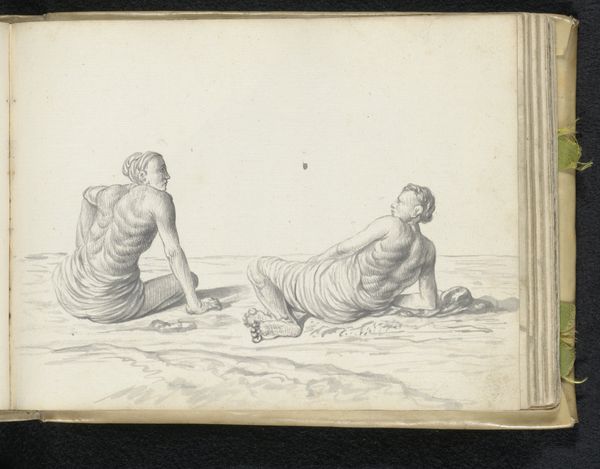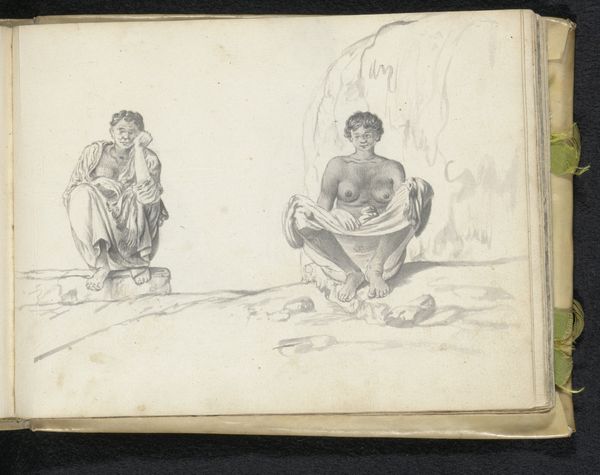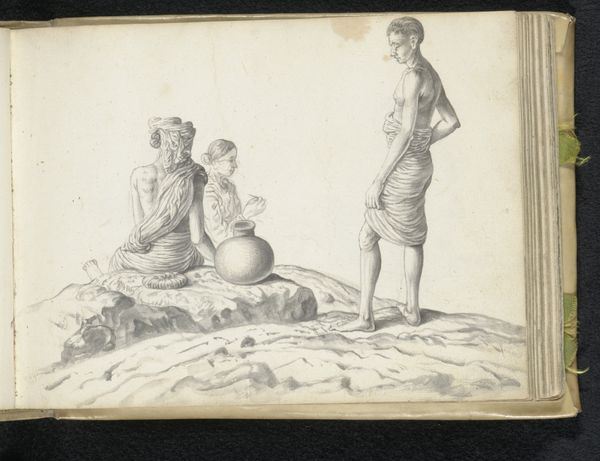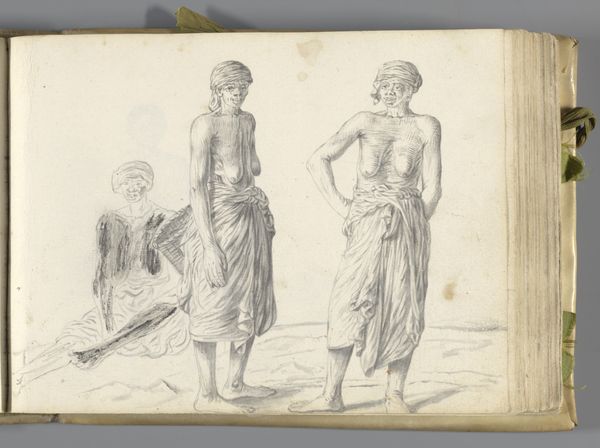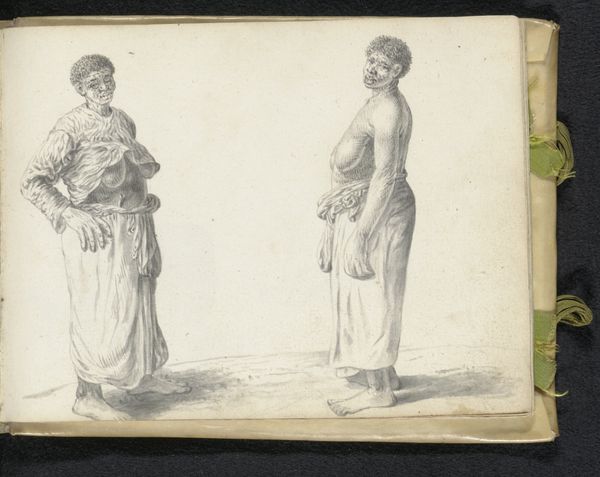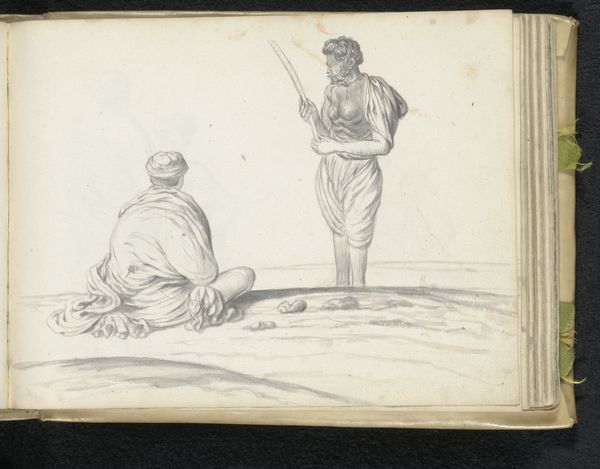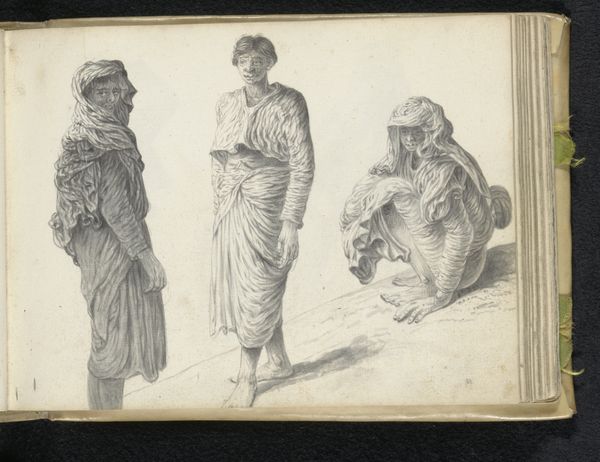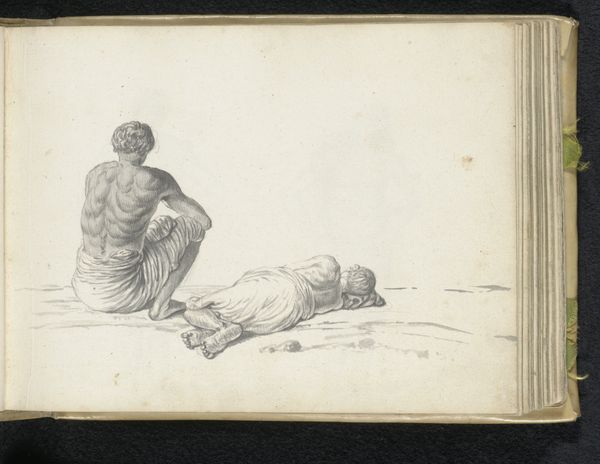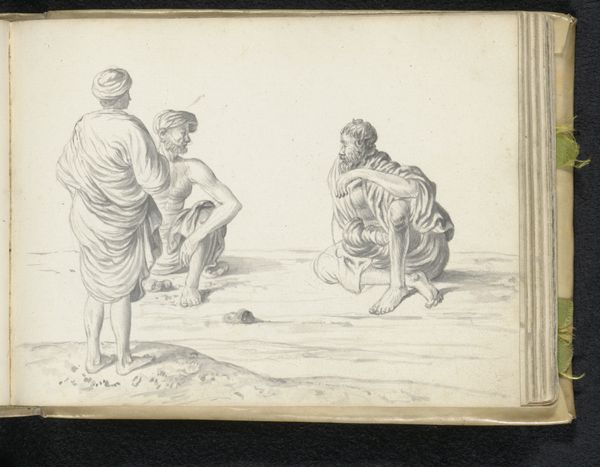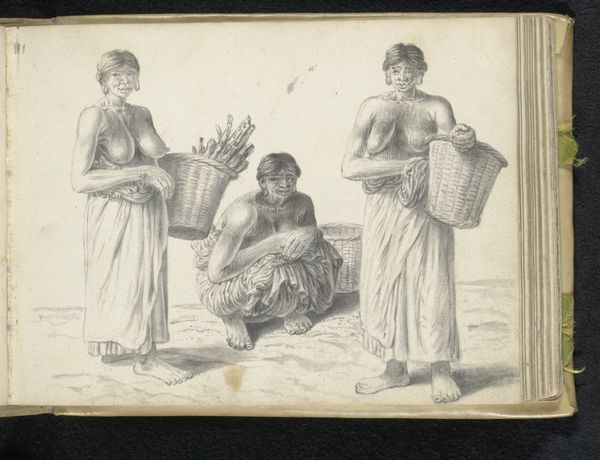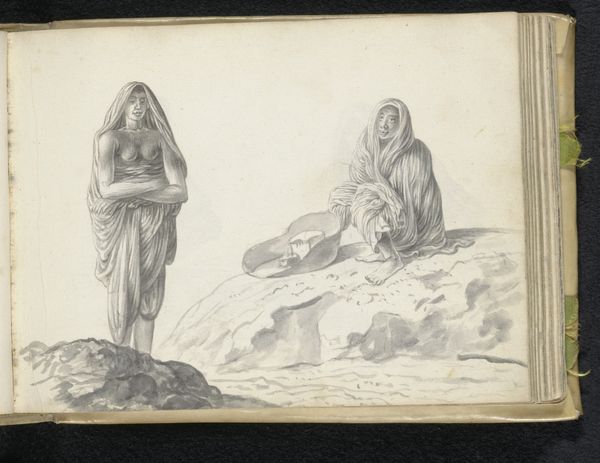
drawing, pencil
#
portrait
#
drawing
#
dutch-golden-age
#
figuration
#
pencil
#
nude
Dimensions: height 148 mm, width 196 mm
Copyright: Rijks Museum: Open Domain
Curator: Esaias Boursse, a Dutch Golden Age artist, created this pencil drawing titled "Two sitting women" around 1662. Editor: Wow, it hits you right away, doesn't it? The raw simplicity. Almost feels like stumbling upon a private moment. There is an air of introspection, even melancholy, to these two figures... And then you start noticing the details and your first impressions starts to be reshaped. Curator: Indeed. The juxtaposition of the two women offers much to consider. The woman on the left is draped, head in hand, an age-old pose of contemplation or perhaps grief. Across from her, the other woman, with a missing arm and exposed torso, confronts the viewer with remarkable stoicism. Their relationship is not obvious and the theme may explore themes of resilience or quiet suffering, with perhaps undertones of hidden societal inequalities. Editor: See, "suffering" feels a bit heavy-handed, I get "realism". There's something unapologetic in Boursse’s rendering of both women – almost like a declaration that these bodies, in their reality, deserve to be seen. Like an assertion of human existence and what that existence actually looks like, rather than an idealized projection of that reality. Curator: Perhaps. The choice of pencil contributes to this effect, a deliberate un-embellishment of form, drawing us to consider our social and historical lens. Think of the prevalent expectations and idealization of female bodies in Dutch Golden Age painting, now compare this almost unassuming pencil drawing with a rather contrasting aesthetic. It invites conversations about vulnerability, acceptance, even power. The setting almost makes me think about a distant beach and some form of inner retreat for the figures to seek isolation and perhaps contemplate in solitude. Editor: Precisely. You know, looking at her again, the second woman almost feels sculptural, seated as she is on what seems like a hewn stump. It grounds her, lending her this silent, enduring quality... A poignant reflection, really, on resilience, the beauty in imperfection, the strength of those surviving their suffering, rather than only experiencing it. I take away hope. Curator: An interesting interpretation indeed. Her very gaze becomes a form of quiet defiance of any easy emotional categorisation. Her humanity cannot simply be boiled down to "suffering," even as signs of hardship are evident. Editor: Absolutely. The more I look at the "rawness" of this "snapshot", as well as the interplay of intimacy and distance, I find that my emotional awareness keeps shapeshifting. I might even say that "Two sitting women" can become whatever you allow yourself to turn it into. And, from an anthropological, psychological or even artistic point of view, that alone makes this piece invaluable. Curator: I agree, I now appreciate how Boursse captured that inherent, shifting nature of seeing, being seen, and understanding how identity is communicated through art in different cultural moments.
Comments
No comments
Be the first to comment and join the conversation on the ultimate creative platform.
